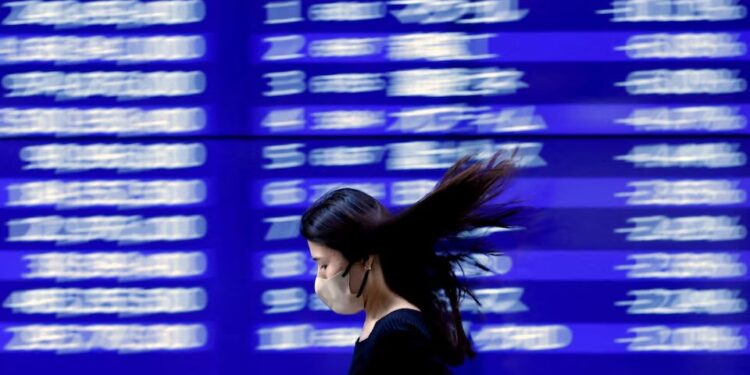Asian stock markets opened with mixed results today, 19 June 2025, reflecting cautious investor sentiment amid ongoing global trade uncertainties and geopolitical developments. While some indices saw modest gains, others dipped, underscoring the complex economic landscape shaping the region’s financial outlook.
Japan’s Nikkei 225 index edged up by 0.4% in early trading, buoyed by a slightly weaker yen that supported export-oriented companies. Firms like Toyota and Sony saw incremental gains, though market enthusiasm was tempered by anticipation of the Bank of Japan’s upcoming policy meeting next week. Investors remain keen to gauge whether the central bank will adjust its stance given revised economic growth forecasts showing a milder contraction of 0.2% for the first quarter of 2025.
In contrast, China’s Shanghai Composite index opened flat, with minimal movement as traders digested recent economic data. May’s consumer price inflation fell by 0.1% year-on-year, a smaller decline than expected, but persistent deflationary pressures and lacklustre export growth to the U.S. weighed on sentiment. Hong Kong’s Hang Seng index, however, gained 0.7%, driven by a rebound in tech stocks. Companies like Alibaba and Tencent saw renewed interest, though concerns over U.S. tariffs continued to loom large.
South Korea’s Kospi index rose by 0.9%, extending its upward trajectory following the recent election of President Lee Jae-myung. Investors are optimistic about his proposed capital market reforms, which aim to enhance minority shareholder protections and stimulate economic growth. Heavyweight stocks like Samsung Electronics and SK Hynix contributed to the gains, with the latter climbing 1.5% amid strong demand for AI-related chips.
Elsewhere, Australia’s ASX 200 index slipped 0.3%, pressured by declining commodity prices and uncertainty surrounding U.S. monetary policy. Mining giants BHP and Rio Tinto faced headwinds as iron ore prices softened. Similarly, Singapore’s Straits Times index opened marginally lower, reflecting a cautious approach as non-oil domestic exports unexpectedly fell in May.
The broader market mood remains influenced by U.S.-China trade dynamics and escalating tensions in the Middle East. Recent reports of temporary approvals for China’s rare earth exports and Boeing’s jet deliveries to the region suggest a slight easing of trade frictions, but investors are wary of U.S. President Donald Trump’s tariff rhetoric. Additionally, rising oil prices due to Israel-Iran conflicts have prompted a shift towards safe-haven assets, with gold prices hovering near $3,300 per ounce.
Analysts note that liquidity and volatility are highest during the opening hours of Asian markets, making them critical for traders. However, lunch breaks in markets like Shanghai and Hong Kong often lead to quieter mid-session trading. For global investors, aligning with these hours—Tokyo opens at 8:00 PM EST, Hong Kong at 9:30 PM EST, and Shanghai at 9:30 PM EST—remains essential for capitalising on early market moves.
As the day progresses, market participants will closely monitor U.S. stock futures and any developments in trade negotiations. With the U.S. Federal Reserve’s next moves under scrutiny and regional central banks like the Philippines’ poised to cut rates to spur growth, Asian markets are likely to remain sensitive to external cues. For now, the region’s financial hubs reflect a delicate balance of optimism and caution.
newshub finance











Recent Comments